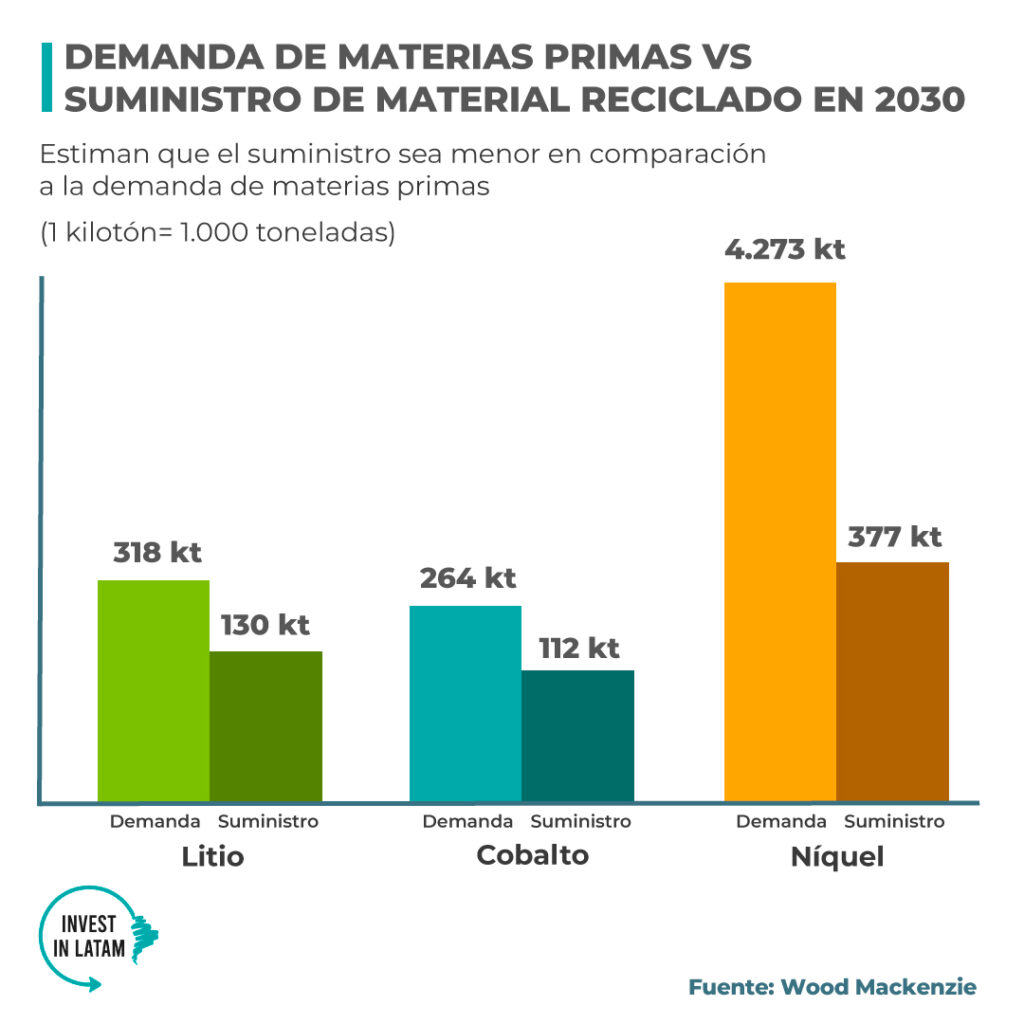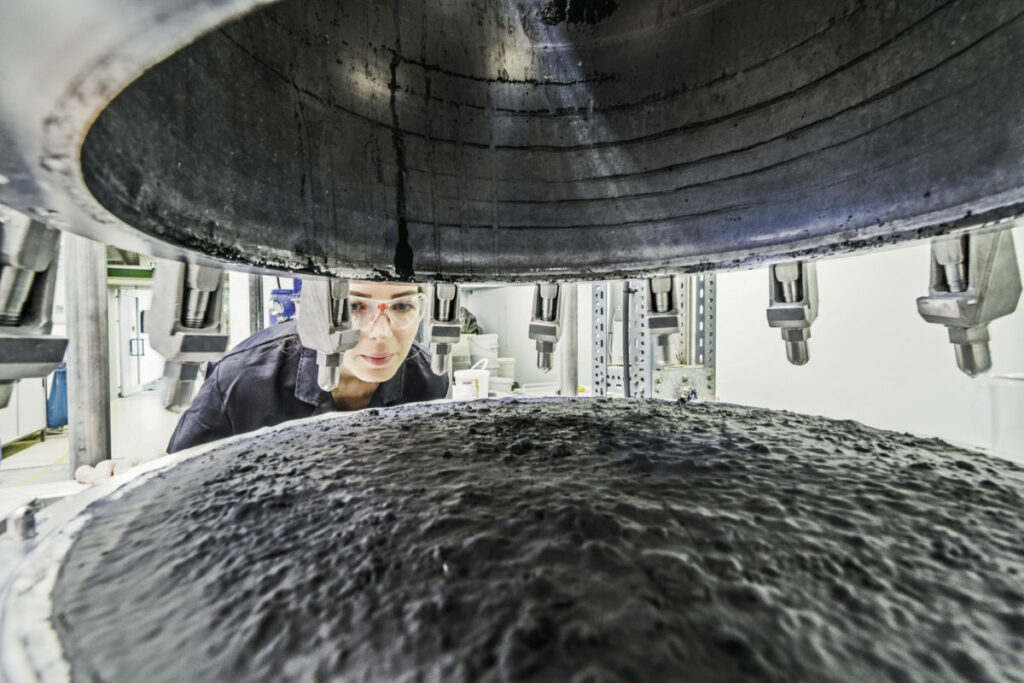Research and consulting firm Wood Mackenzie says that while recycling can alleviate some of the pressure on the battery raw material supply deficit, it will not be able to meet demand alone.
Electrification of the transportation sector has led to a boom in demand for lithium-ion batteries, and it is estimated that cumulative global capacity could increase fivefold to 5,500 gigawatt-hours (GWh) between 2021 and 2030.
Wood Mackenzie Research Analyst Max Reid notes that “recycling production scrap and end-of-life batteries could become an important source of feedstock to meet growing demand. Recycling also represents an opportunity to source materials in regions that lack natural resources.”
Currently, demand for the main raw materials for batteries amounts to 97 kilotonnes (kt) of lithium, 186 kt of cobalt and 3,014 kt of nickel. By 2030, these are expected to increase to 318 kt, 264 kt and 4,273 kt, respectively.

For its part, the supply of recycled materials, although smaller in comparison, is expected to reach 130 kt of lithium, 112 kt of cobalt and 377 kt of nickel, respectively, by the end of the decade.
Key challenges
The challenges of recycled battery feedstocks seem insurmountable, and most of the discussion has revolved around the collection and recycling of end-of-life electric vehicles, but the process is fraught with challenges. For Wood Mackenzie, there are two key cases.
First, the cathode containing critical metals is overpacked with materials such as housings, interconnects, cooling channels and others, resulting in a tedious and low-value recycling process.
In addition, along with the industry’s tendency to use lower value materials, using larger electric vehicle batteries is also a deterrent to recycling, as the yield is lower.
Second, electric vehicle batteries have a long warranty and service life, so recovering critical metals will be a long-term issue. In addition, the emergence of second-use applications, such as residential or industrial energy storage, will also prevent them from entering the recycling system at the end of their useful life.

The importance of recycling
Recycling production scrap will be the main source of recycled material this decade. China, Europe and North America will experience a huge increase in battery and cathode manufacturing to meet battery demand.
Globally, Wood Mackenzie forecasts battery manufacturing capacity to increase 3.5-fold to more than 4,621 gigawatt-hours by 2030, with China leading the way, providing a growing market for scrap production.
“Ultimately, the amount of production scrap or end-of-life electric vehicles will never be able to meet demand as long as demand continues to increase. A push to expand the supply of virgin products and maximize the recycling sector is needed to alleviate the shortfall,” says Max Reid.
You may also be interested in > McKinsey: 70% of People are Willing to Use Micromobility Vehicles
Written by Antonio Vilela




